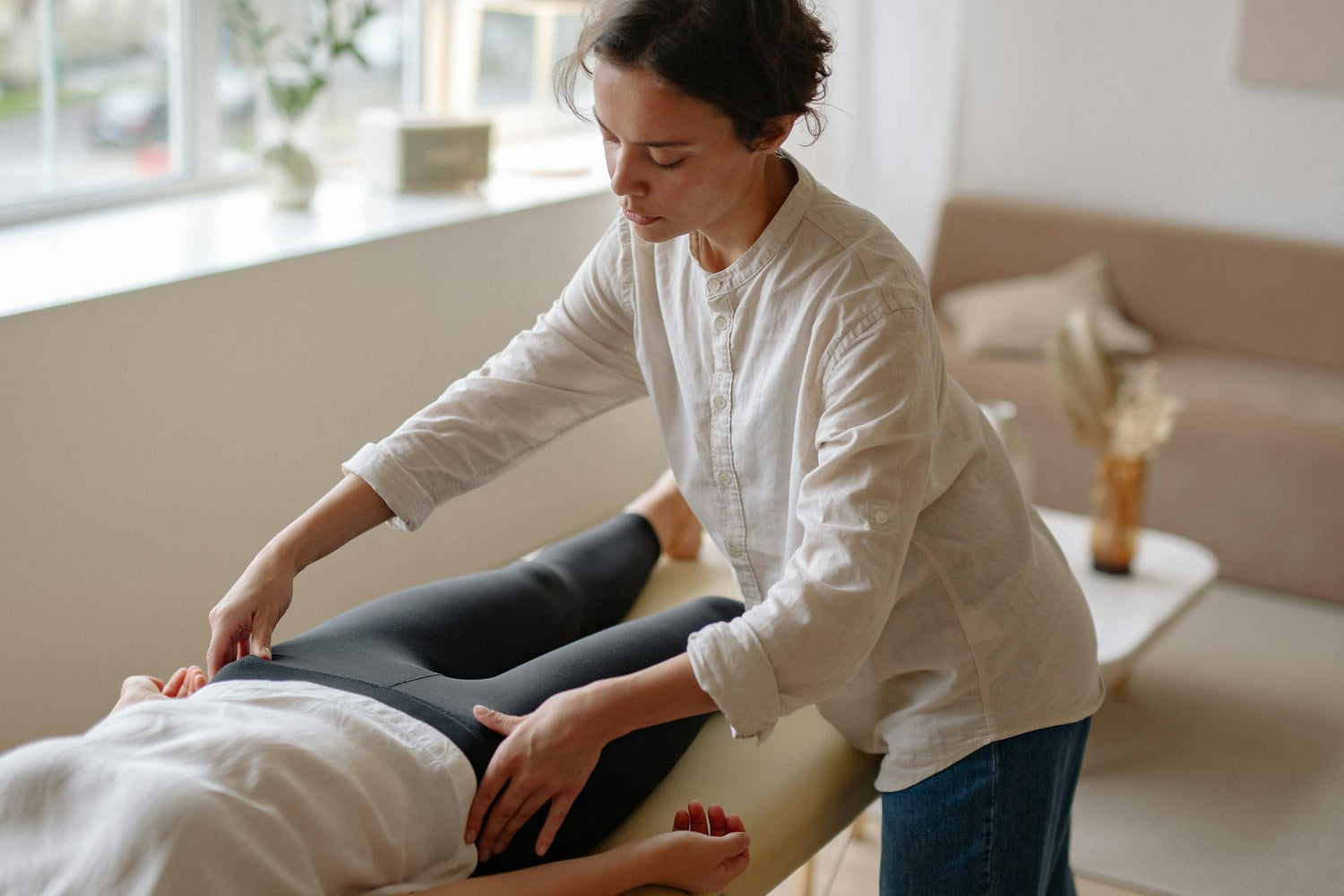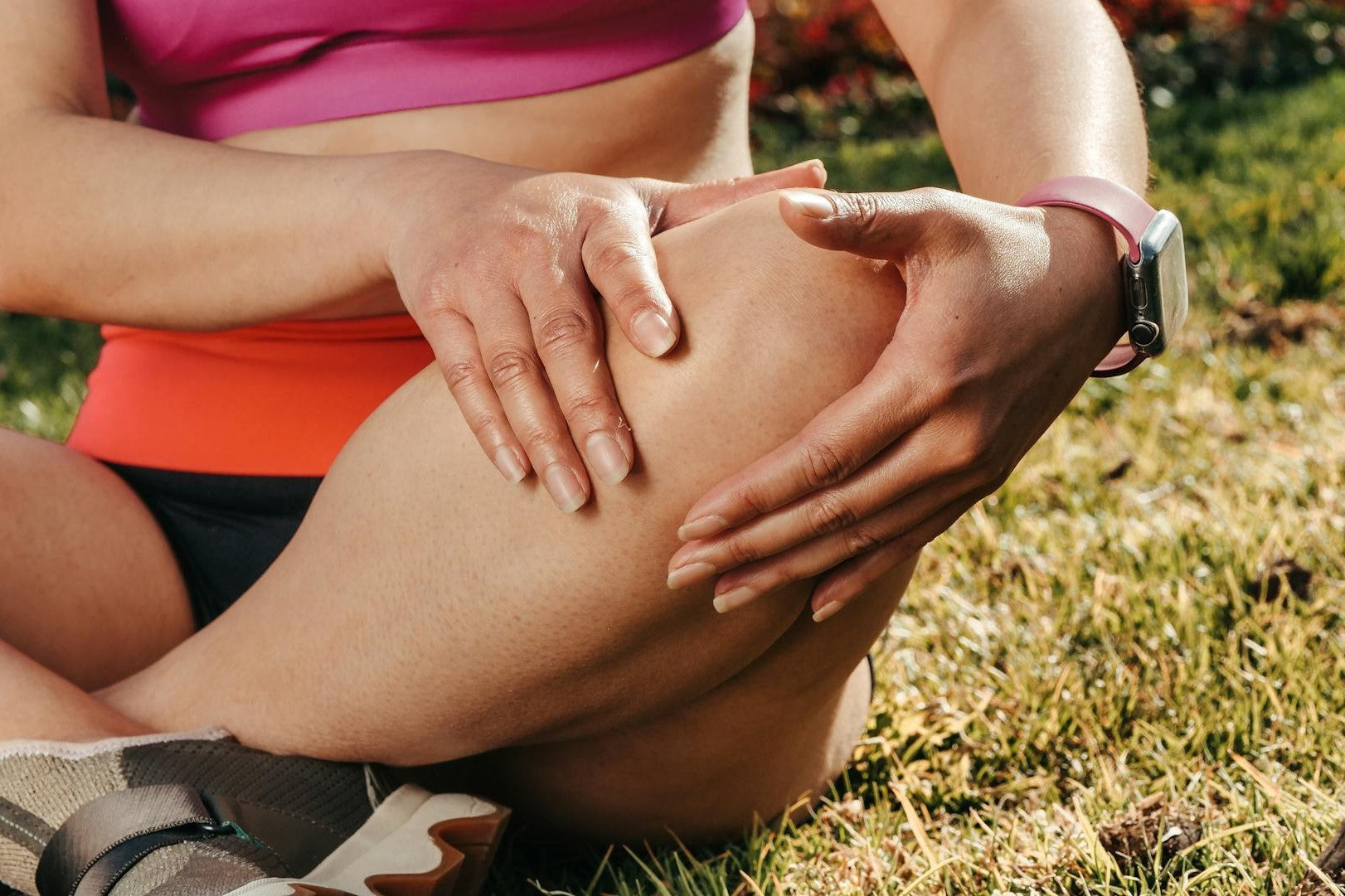Have you been dealing with hip pain lately? Maybe you went too hard during your last gym session, or maybe you’ve been having pain flare-ups in your hips for a while now. In any case, pain in these busy joints can be rough, making even simple actions — like walking or lying on your side — more difficult. But can a massage for hip pain help you find relief?
Below, find a complete guide on massage for hip pain. We’ll cover the muscles involved, massage’s potential benefits, and what to consider before getting started.
Sources of Hip Pain
Before you visit a spa or try a home massage tool, it’s important to ask yourself: What is causing my hip pain? If you aren’t sure and are dealing with severe pain or additional symptoms, it’s essential to talk with your doctor before starting massage.
Common causes of hip pain include:
- Bursitis
- Arthritis
- Strains or injuries
- Nerve issues
- Osteoporosis
- Other serious issues such as cancer, a hip fracture, or bone disease
The Muscles Involved in Your Hips
While some serious conditions can cause hip pain, this is not always the case. It often stems from simple overuse or tight muscles — and these are the times when massage could help you most.
Your hips are complicated joints with a lot of moving parts. There are muscles that extend, rotate, and flex the hips, and many of them are layered on top of one another.
Here are some of the key muscle groups that help your hips function:
- Gluteal muscles: These play a role in moving your thighs and keeping your body stable. They also support your pelvis, lower back, and knees.
- Adductor muscles: These inner thigh muscles work to bring the legs inward, towards the center of your body. They also support your ability to rotate your legs.
- Iliopsoas muscles: These inner hip muscles help with stability and flexion (aka bringing the leg up towards your chest.)
- Lateral rotator group: The small hip muscles help with the outward rotation of the legs.
How Massage for Hip Pain Works
If you have pain near the side of your hip joint, the source can sometimes be tension in the buttock and hip region. And by massaging the muscles in the surrounding area — such as the thigh muscles, glutes, and hamstrings — you may be able to soothe away some of your pain.
In addition, many people find that they have unexpected trigger points (or knots) near the glute medius and minimus. These two muscles are found under the gluteus maximus, and knots in this area often play a role in tight or achy hips.
Sometimes, you might not even realize that you have trigger points in your gluteal muscles until you try to massage them. With that in mind, you could find some pain relief by kneading these areas and spending extra time on any knots you come across.
What Are the Best Ways to Try Massage for Hip Pain?
If you want to try massage for hip pain, here are a few ways to get started:
Visiting an Experienced Massage Therapist
Visiting a masseuse is a popular (albeit a bit costly) way to try massage for hip pain.
When you visit a registered massage therapist, the session will typically start with them going over a few basic questions with you. They may ask you about your medical history and health concerns to ensure that massage is a good fit for you. Then, they’ll work with you to choose a massage style that suits your needs.
Self-Massage with Hands or Manual Tools
If you don’t want to visit a spa, you might find it worthwhile to try a gentle self-massage with your hands for a few minutes, a few times per day. Or, for a deeper home massage, you can try hip or glute-focused exercises using a foam roller or massage ball.
Try a Massage Gun or Body Massager
An electric tool like a massage gun or body massager can help you soothe tension in your glutes and hip muscles without tiring out your hands. Many home tools use oscillation or percussion technology, making regular massage easy and effortless.
Simply spend a few minutes running your device over the hip and glute muscles that feel tight or tender. Be sure to start on a low and gentle setting, and increase the pressure from there. This gives your muscles a chance to warm up before moving to a deeper massage.
What You Should Know Before Trying Massage
Here are some tips to keep in mind before you try massage for hip pain:
- If you’re using a powerful tool like a massage gun, there are certain areas you should avoid. In specific, avoid bony areas, arteries, and regions near your lymph nodes, such as the top of your thigh near your groin.
- Avoid any massage techniques that cause pain. Kneading out knots or trigger points near the glutes and hips can sometimes feel uncomfortable, but massage should not be downright painful.
- Stretches can also help you loosen up muscle tension around your joints. So, if your hips mostly feel tight as opposed to painful, don’t hesitate to try a few stretches.
The Takeaway
Hip pain can occur as a result of many conditions, and massage won’t necessarily be able to fix everything. But if overworked muscles or trigger points are the culprits behind your hip pain, this natural therapy could be exactly what you need to find relief.
Be sure to check with your healthcare team before starting massage. Hip pain can occasionally arise from more serious conditions, and in some cases, your doctor may recommend that you avoid pressure and touch. And if massage does turn out to be right for you, your physician can offer you tips for getting started based on your unique body and health.
More Ways to Massage
Are you interested in regular, therapeutic massage therapy at home? Restorative tools like those from MedMassager could bring you daily relief.
Check out the MedMassager Body Massage Plus, or learn more about its uses and benefits today.


